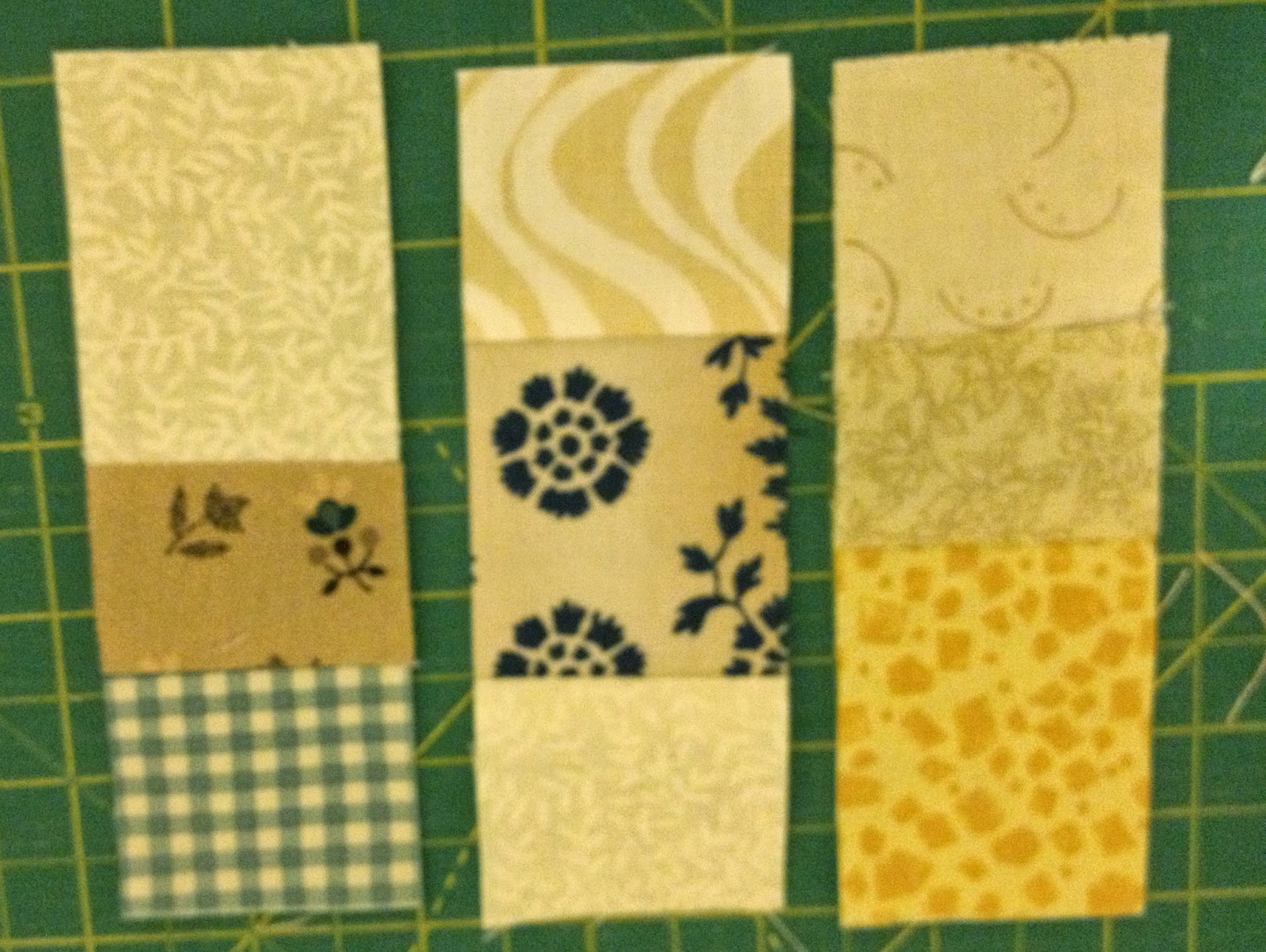What made this particular project fun was the very nature of the quilt pattern itself. This is what is called a "scrappy" quilt, and it combined different colors and patterns that one might not typically consider when putting a quilt together. I typically like order and planning so allowing myself to throw caution to the wind and be totally random was a bit of a challenge for me.
Each of us was instructed to bring a specified number of dark- and light-colored fabric strips to the first day of class. Once we got to class, we combined the fabric strips together which further increased the variety, and each camper could pick and choose those she wished to use in her quilt. Although the finished quilt looks as though it is made up of multiple tiny squares, the process for constructing the blocks really isn't that complicated. You can order the pattern for this quilt online at Animas Quilts.
Here is a quick summary of the process for sewing this quilt:
The process begins by selecting three dark or light fabric strips and sewing them together. This picture illustrates three different dark colors. The project involves wider and narrower strips of fabric. In this picture, the strips are arranged in a narrow-wide-narrow pattern. When putting the 3 strips together, the point is to be random and not worry about what may or may not "go" together.
Once the three strips of fabric have been sewn together, they are sub cut into narrower strips. This picture illustrates the process with some strips that have been created with light fabrics. You can see that the two outer strips were created from fabric strips that were sewn together in a narrow-narrow-wide combination whereas the middle one was created from strips sewn together in a narrow-wide-narrow combination. When selecting the narrow 3-piece strips to sew together into a block, the point is again to be random - just keep the lights together and the darks together.
This picture illustrates three strips that have been sewn together. Sorry that it is a bit blurry, but you can still get the idea.
The paired up light and dark triangles will look something like this when sewn together. This is the basic block for the quilt. These blocks are simply rotated within the individual rows to create the larger quilt pattern.
Here are a few close-up pictures of sections within the completed quilt that allow you to see how the basic block unit is repeated and how the rotation of the block within the row helps create the larger image.
A few months ago, my husband purchased a new camera. I've been enlisting his help in taking some higher quality pictures of my finished quilts. These next two pictures feature the feathering in the outer border. I am very grateful to have found a wonderful machine quilter to do this work for me.

While working on this quilt, I found myself contemplating the nature of what seem to be "scraps" in our own lives. During the course of life's journey, we often experience events that may seem to be out of place. We may even question how these events could possibly have a purpose. We also experience events that stand out as markers in our lives, both positively and negatively. Other times, we feel that we are experiencing one random event after another and seek to understand how these events all tie together.
For us as believers, we can rest secure in trusting a God for whom nothing is random. While we are often limited to visualizing what is present, God is constantly aware of the larger work He is creating within us. We may wonder how that red flowered fabric is ever going to go with the black and gold plaid, yet God can bring these pieces together in a way that results in a work of beauty that more than exceeds our expectations.
With this particular quilt, if we keep our focus on the individual squares and triangles, we miss the larger image that is created. In our lives, if we keep our focus solely on individual events, we miss the opportunity to see the larger work that God is creating. God doesn't promise the believer that all things are good, but He does promise that He can work all things together for good.
And we know that God causes all things to work together for good to those who love God, to those who are called according to His promise. Romans 8:28













